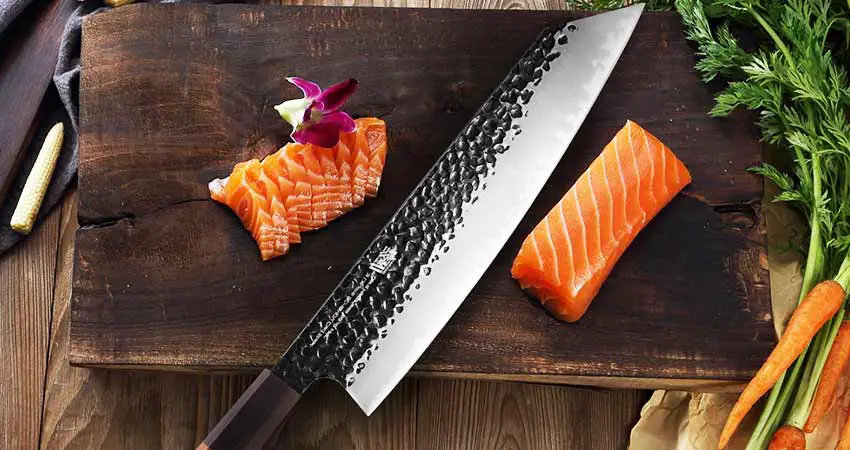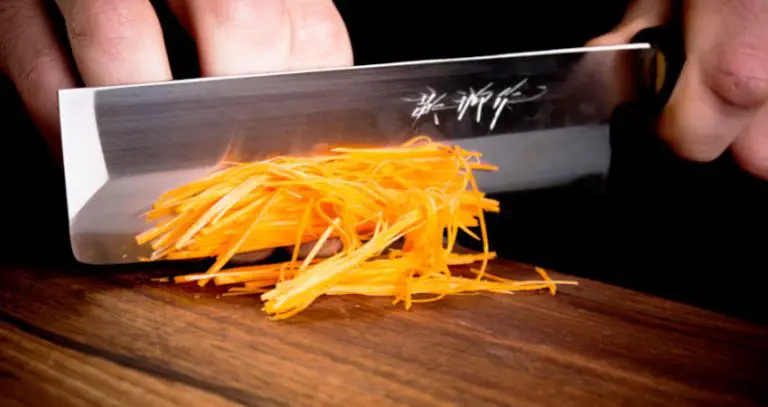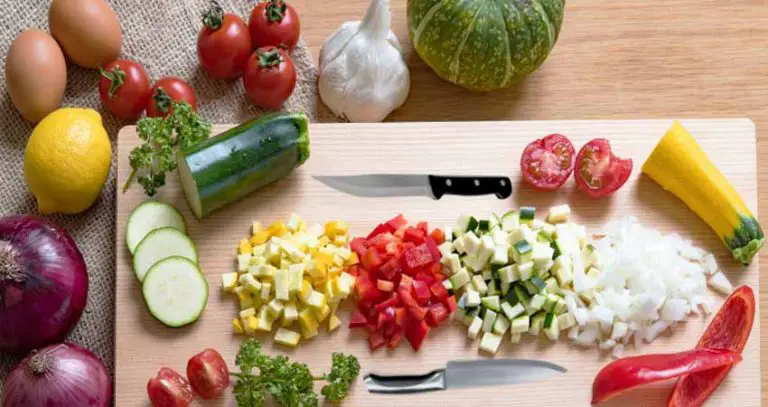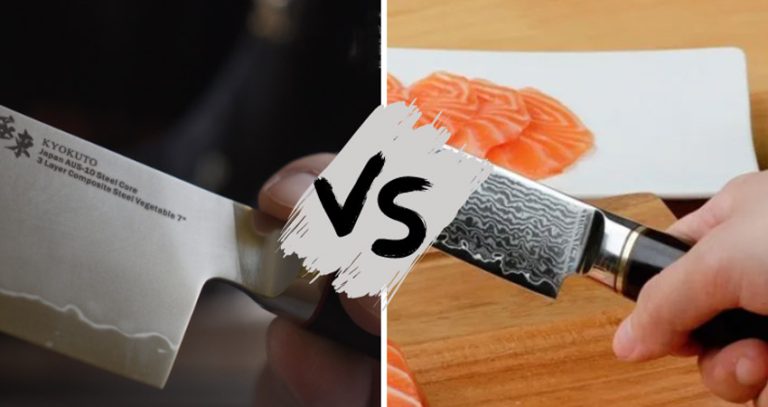How Do You Use a Kiritsuke? A Beginners Guide
Assuming that you’re a Japanese cooking style enthusiast or you’re off to prepare the perfect Sakana No Nitsuke or something of that sort, you’ve ended up at the right place!
Here, we’ll be going full-on nerd with our knowledge of the infamous Kiritsuke, to enable you to learn slicing the most splendid cut of fish.
Even though Kiritsuke’s are traditionally used by executive chefs only, due to its ultimate precision and practice, we’ll guide you through to master the skill.
So, hop on, and let’s start right away.
Kiritsuke: What Is It?
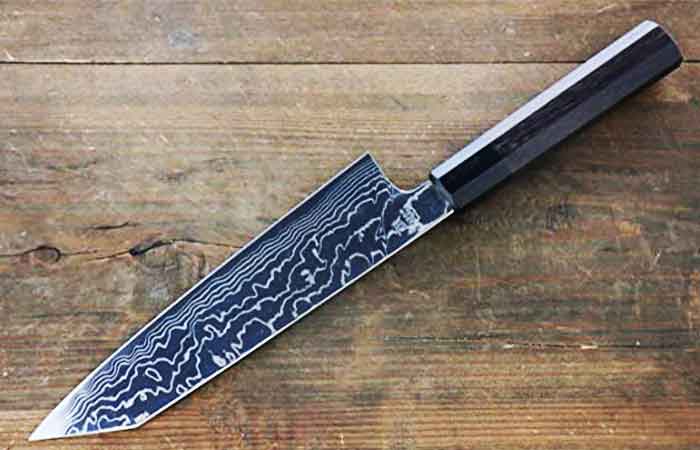
Before we dive into the magic of learning to handle and use a Kiritsuke, allow us to introduce what it really is.
The Kiritsuke knife is known to be a customary Japanese-style slicing knife, a fusion of Usuba, a vegetable slicer, and a Yanagiba, a Sashimi knife.
Due to its meticulous approach to cutting, these are often avoided by amateur chefs. However, with patience and practice, anyone can acquire the art of using it.
Kiritsuke: How Is It Made?
Steel

These oh-so-famous knives are also forged in the traditional Japanese style, mainly divided into two kinds- Honyaki and Kasumi.
First off, Honyaki, often referred to as “true forged”, is the method where Kiritsuke is manually forged using high-carbon steel.
This pure steel goes through a rigorous process of heating and hammering, resulting in an extremely hard-to-break knife.
The second one, Kasumi, also known as mist knives, is manufactured with flattened pieces of soft iron and high-carbon steel.
As a result, a cheaper yet precise version of Kiritsuke is produced through a time-consuming process.
Blade
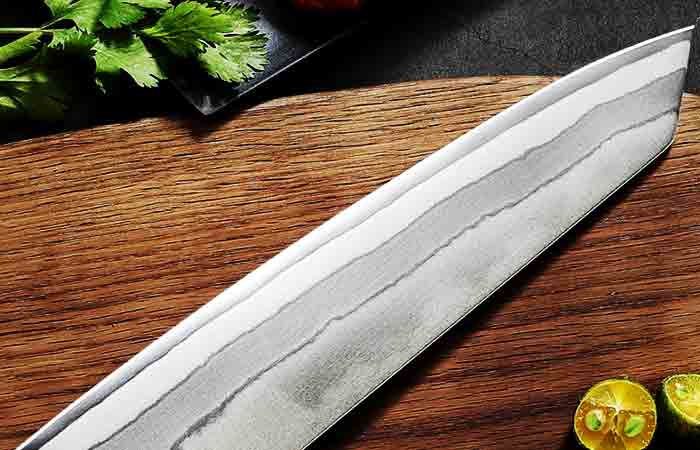
When it comes to the blade grind, Kiritsuke knives are offered in two distinct types- a single-edged knife or a double beveled one.
In the case of the single bevel, the blade is constructed only on one side of the Kiritsuke.
While that of the double-beveled one, also known as kiritsuke gyotus has blade angles on both sides.
Whichever it may be, both of these knives come in a rectangular-shaped blade with an angular yet sharp tip.
Handle
Moving on to the handles of Kiritsuke knives, they are typically made with chestnut wood, a refined yet heavy timber.
With this, you can already tell that the handles on them are usually much heavier than the blade itself.
To prepare the handle, the wood is routinely burnt while press fitting is done to secure it in place.
This allows the professional chefs to firmly grip the knife to flaunt their amazing cutting skills.
How Do You Use A Kiritsuke?
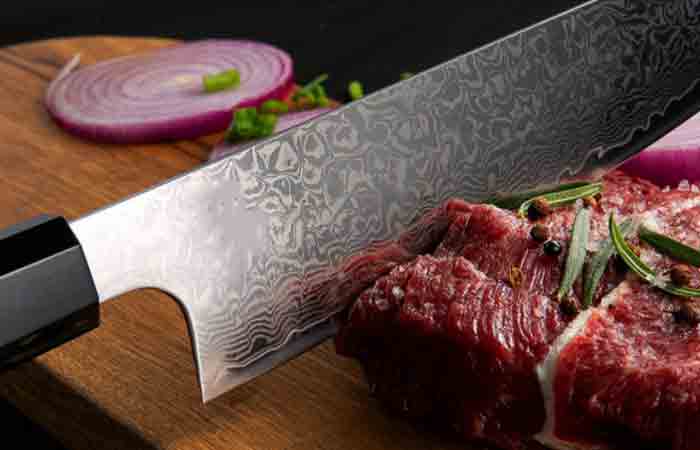
Now comes the most essential part of the reader that you’ve all been waiting for. Since we’ve already covered the tidbits of Kiritsuke knives, let’s start with how to use them.
So, first things first, allow us to cover the basics.
Foot Posture
Before you learn to acquire the actual technique, you need to get a hold of positioning your limbs.
For this, take one of your feet a step back and move it a bit to the side. Doing so will permit you to a flawless movement when slicing up your ingredients.
Gripping The Handle
Next off, to have a proper grip over the heavy wooden handle, use your index finger and thumb to grasp the base of your kiritsuke.
Once this has been done, use the remaining fingers to securely enfold the handle.
However, always make sure that you have enough flexibility with your hands to move the knife around as needed.
Knife Motion
To ensure flawless slicing or chopping, firmly grab the handle and use a gentle rocking motion as you would with other knives.
Nonetheless, the only catch here is to constantly pull and push away your entire body while firmly keeping the knife at a flattened angle.
Pro Tip: In order to mimic the expert Japanese chefs, make sure to use the tip of your Kiritsuke at the beginning, followed by using the whole blade edge. This will enable you to cut a clean and intact piece of fish or meat and make your dish look aesthetically pleasing.
Practice!
This has to be, by far, the best advice we have to offer. When working with a Kiritsuke knife, there’s no substitute to learning the skill overnight.
To master the art of Kiritsuke cutting, you need to spend hours brushing up the techniques. And finally, you will learn!
Maintaining The Kiritsuke Knives
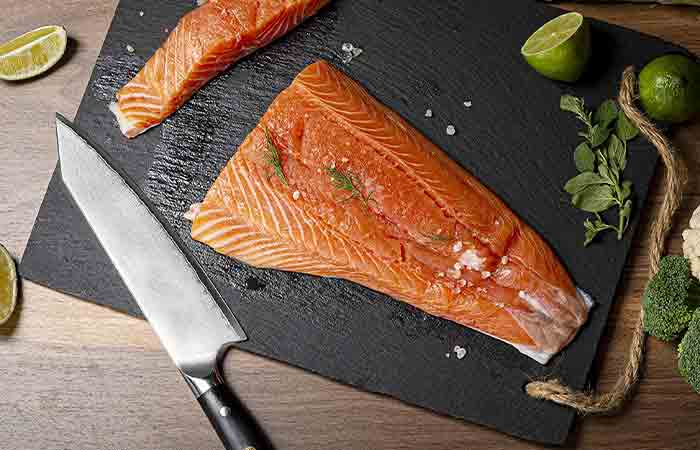
With our kiritsuke techniques coming to an end, we decided to add something extra. As this knife has years of legacy, we must also acquire the knowledge to take good care of this gem!
So, to avoid rusting or dulling of the Kiritsuke blades, be certain to follow the below steps and these knives will serve you for years-
- As with any other knife, to ensure a rust-free blade, clean it after every use. Always remember to use warm, soapy water to do so.
- Once it is washed thoroughly, dry it off with a soft cotton cloth. For added safety measures, wrap a small towel around the knife to store it securely.
- After months or years of use, blades are supposed to get duller. However, to avoid such situations, sharpen your Kiritsuke with a sandpaper or whetstone at intervals. Make sure to not overdo it and ruin the originality of the blade though!
- To confirm longer durability, oil the Kiritsuke blades frequently. By doing this, you will be prolonging the rust-free state of the blades via preventing oxidation.
Conclusion
Having said all we had intended to, it’s time to say goodbye. As we’ve already mentioned, this all-purpose kitchen knife is pretty hard to master.
However, a routine practice of getting a hold of its techniques will definitely come in handy! So, don’t hold back and begin your journey right away. Good luck!

